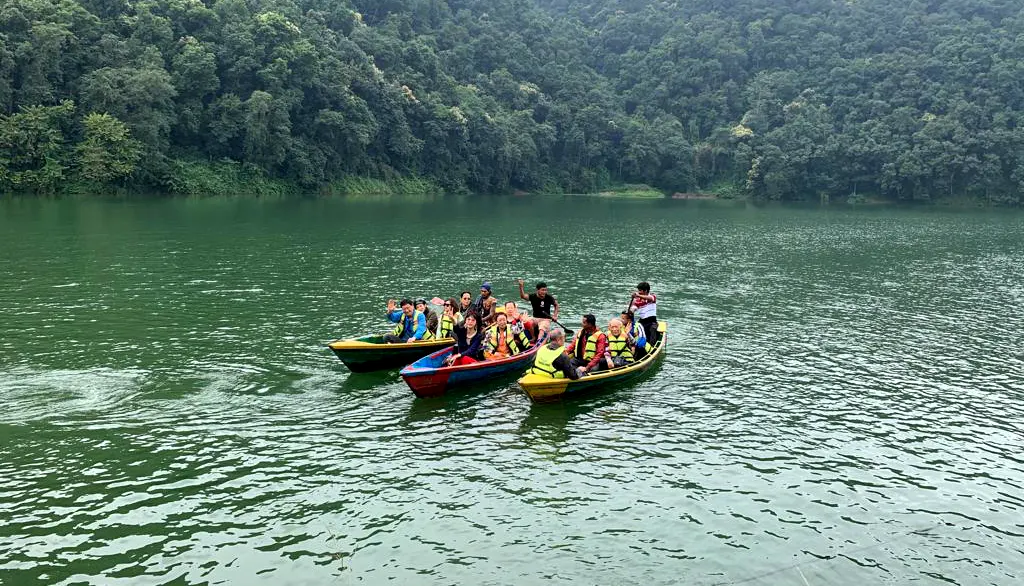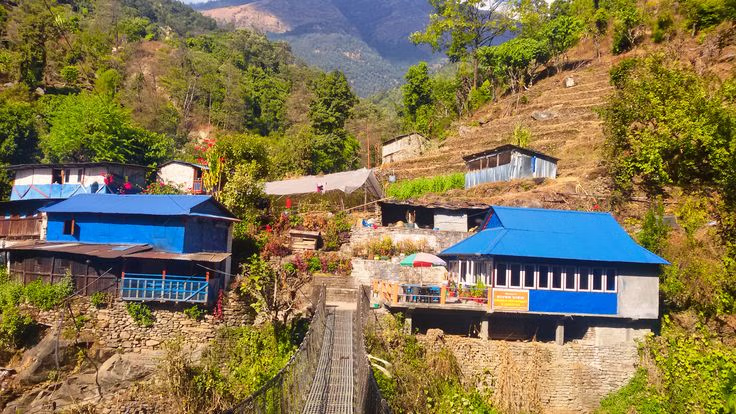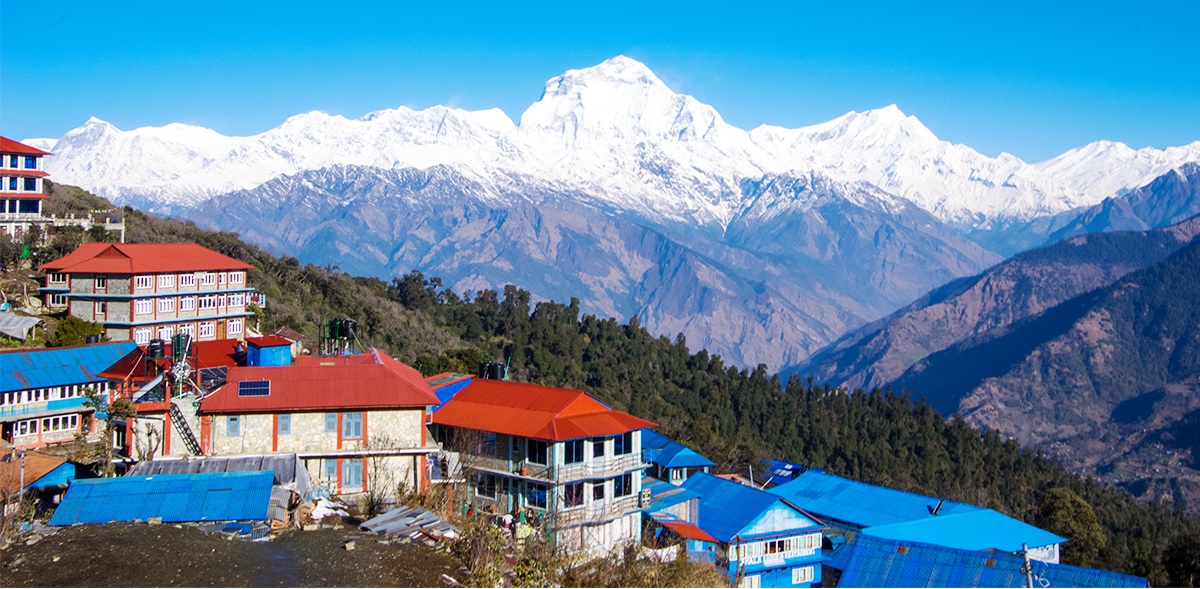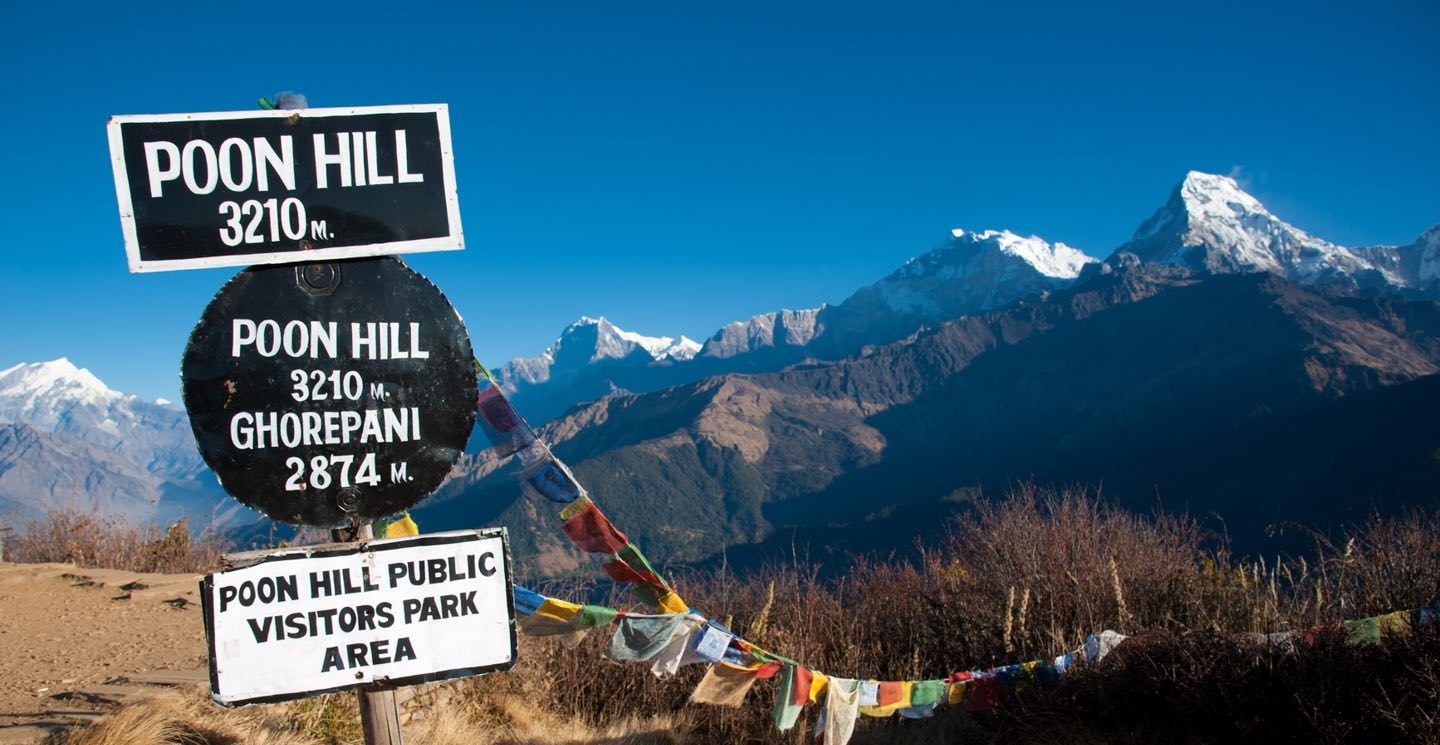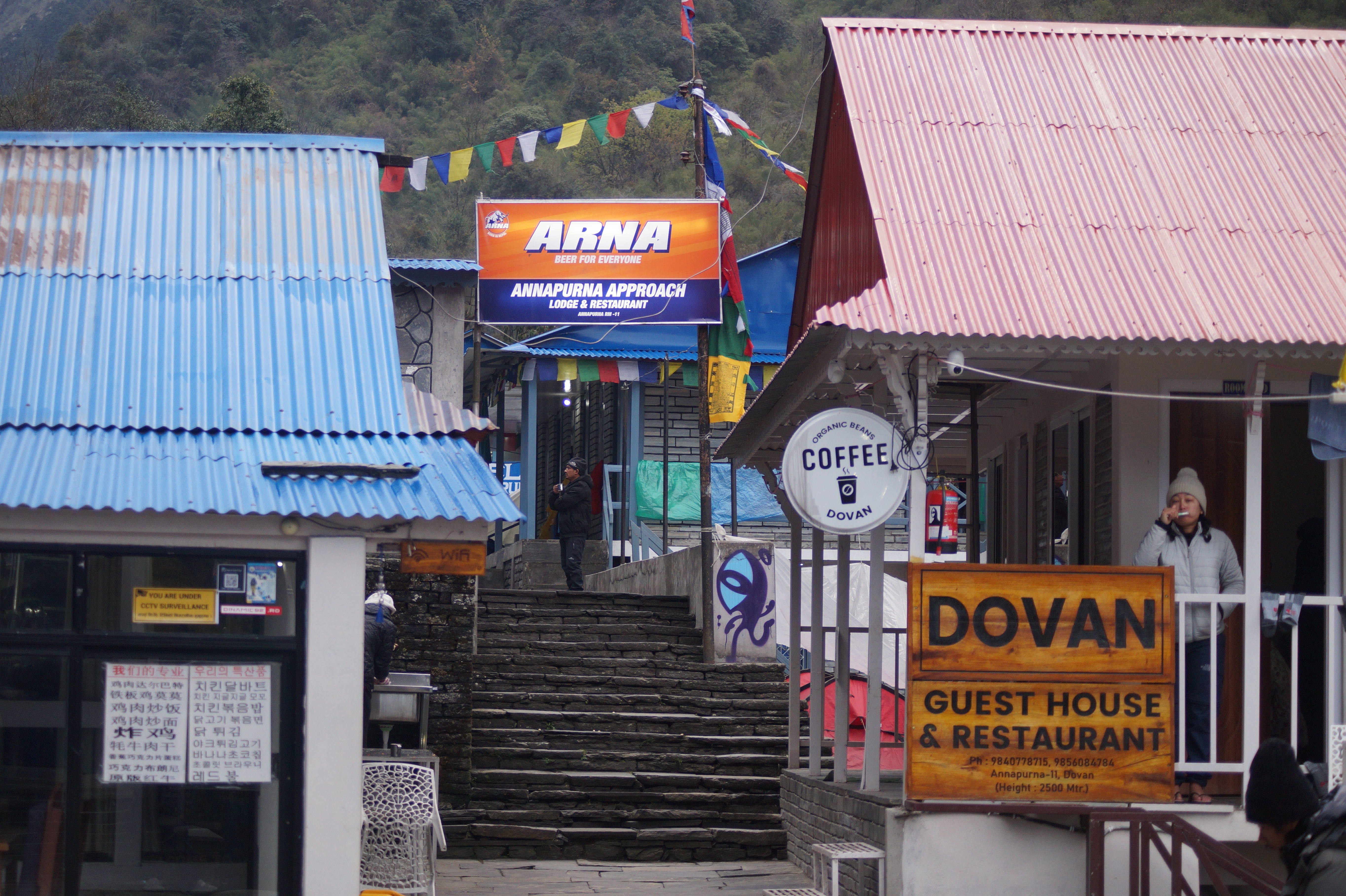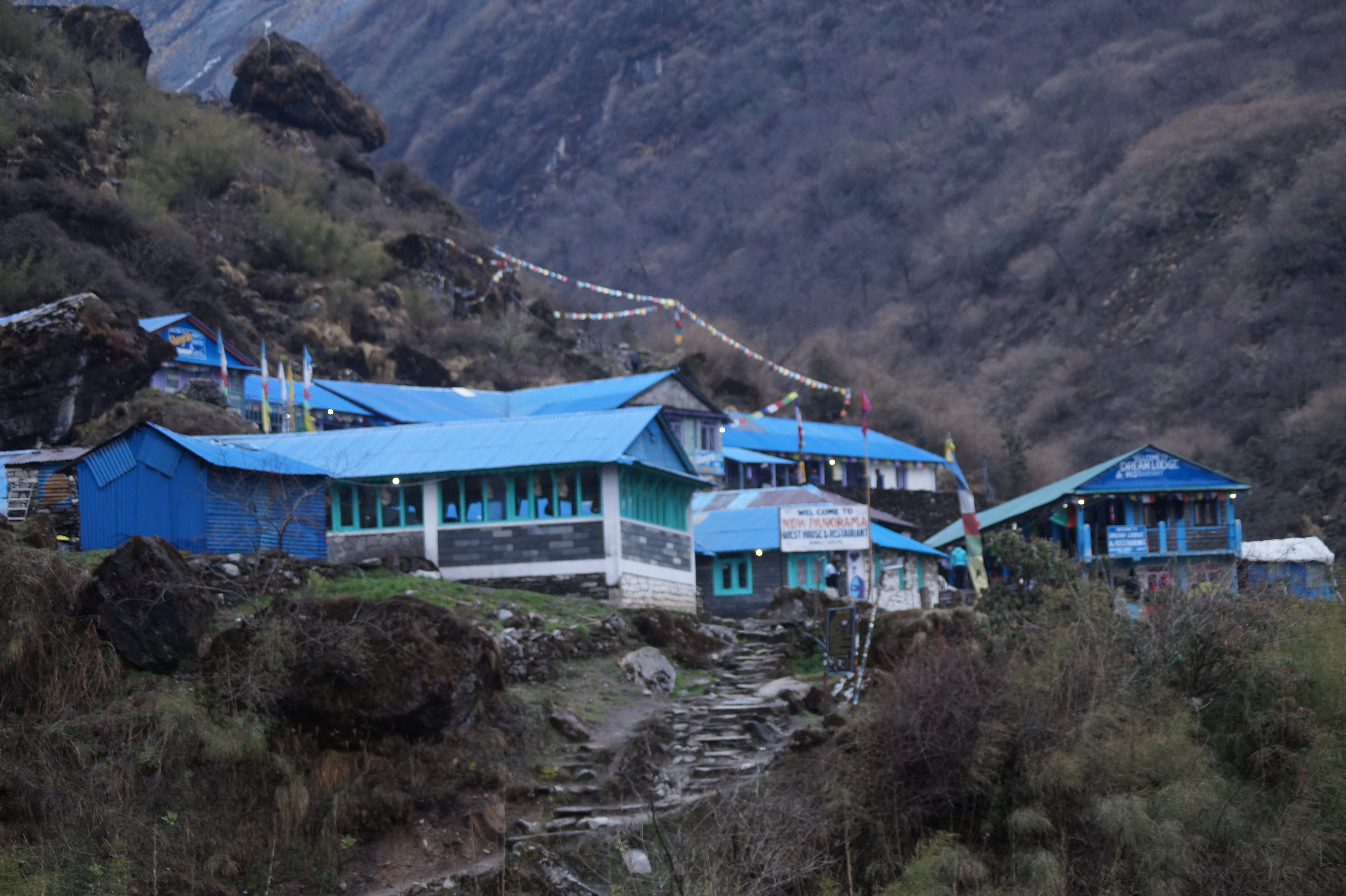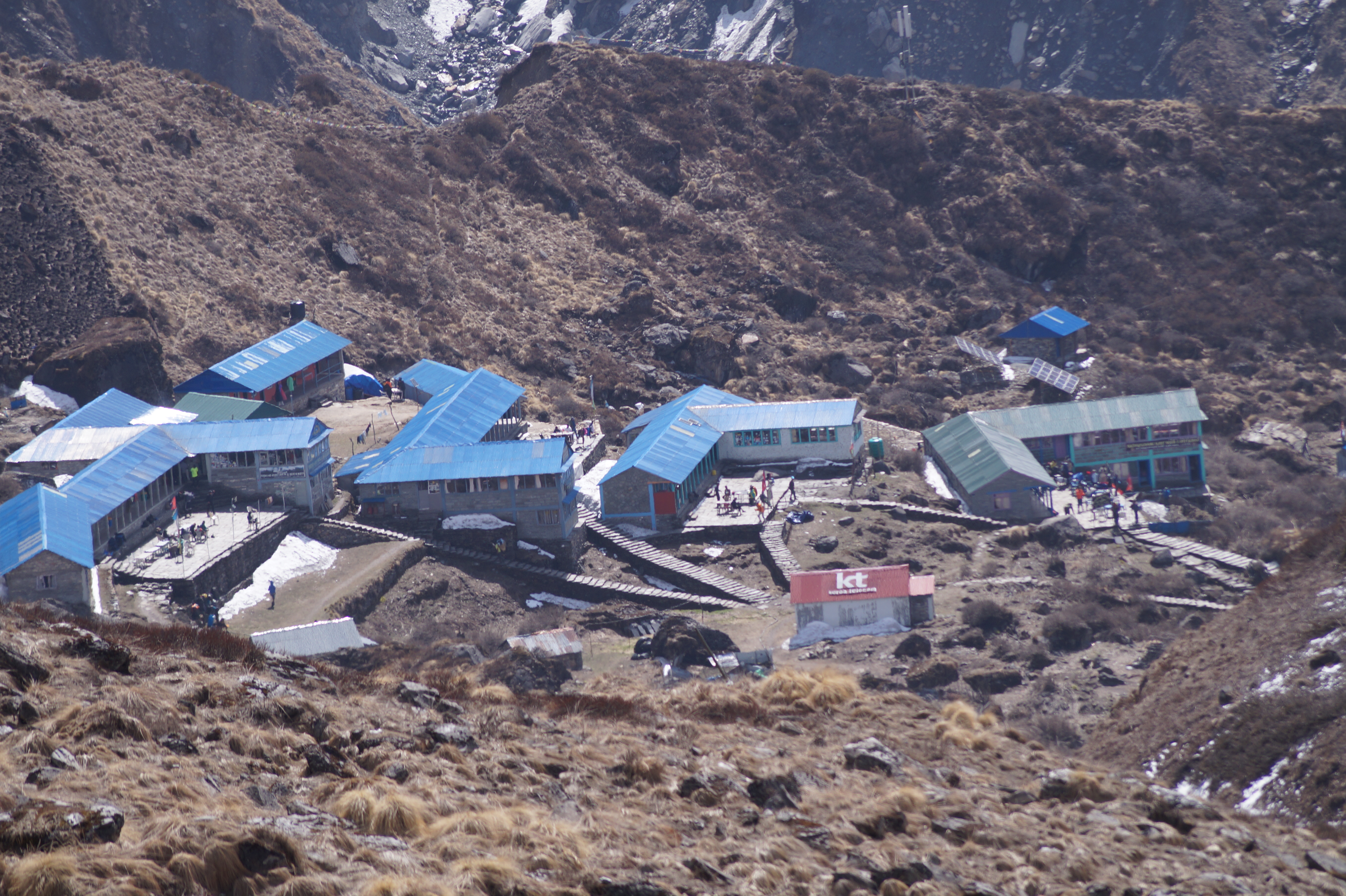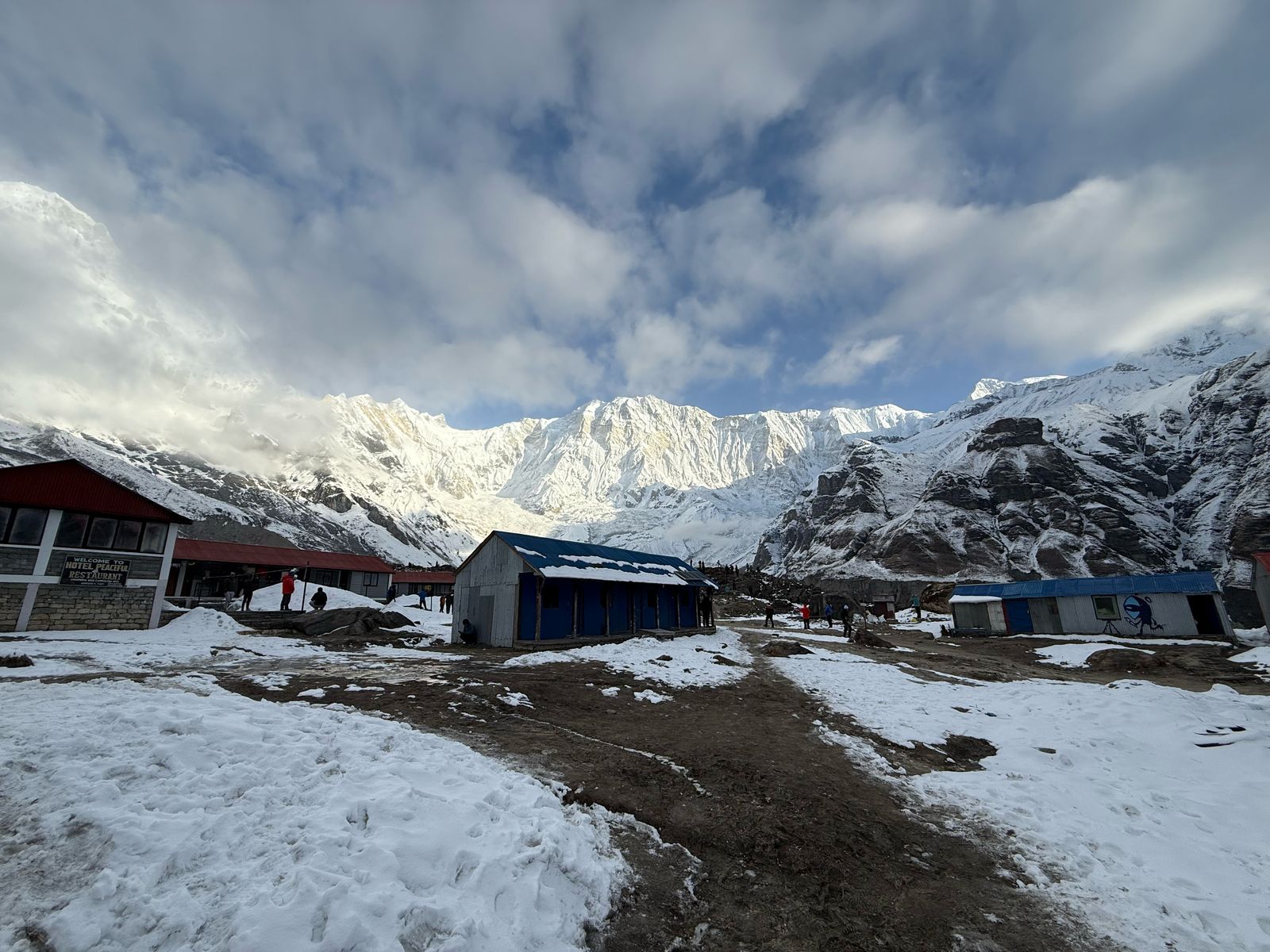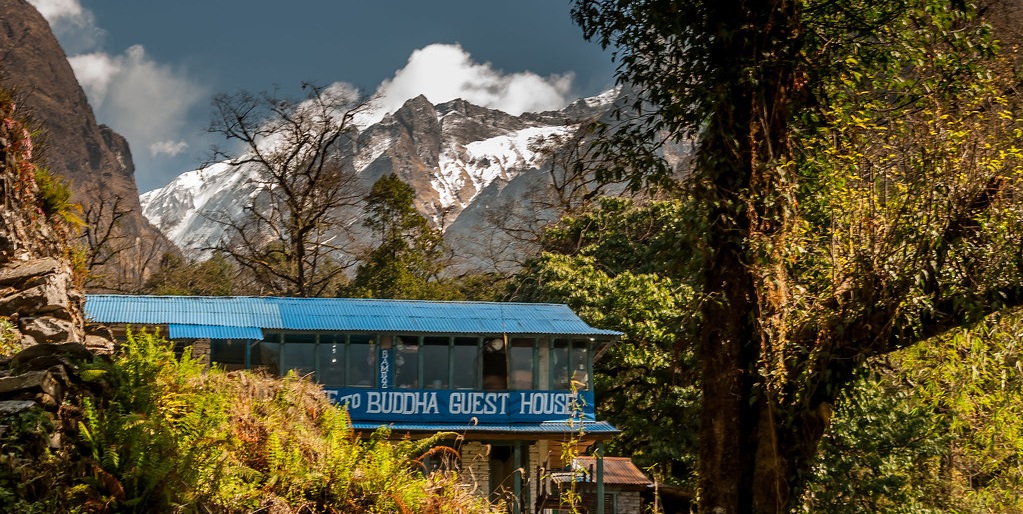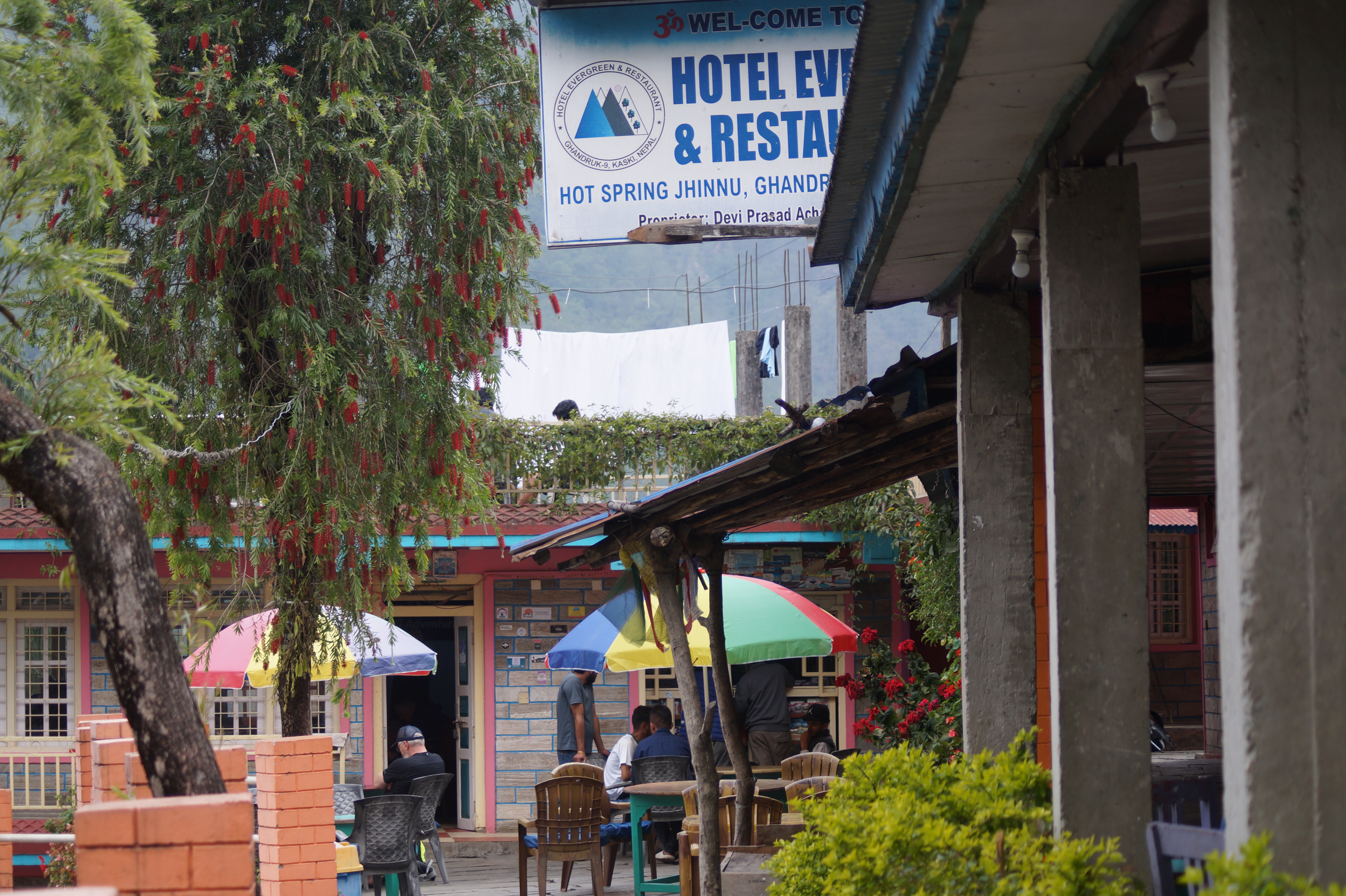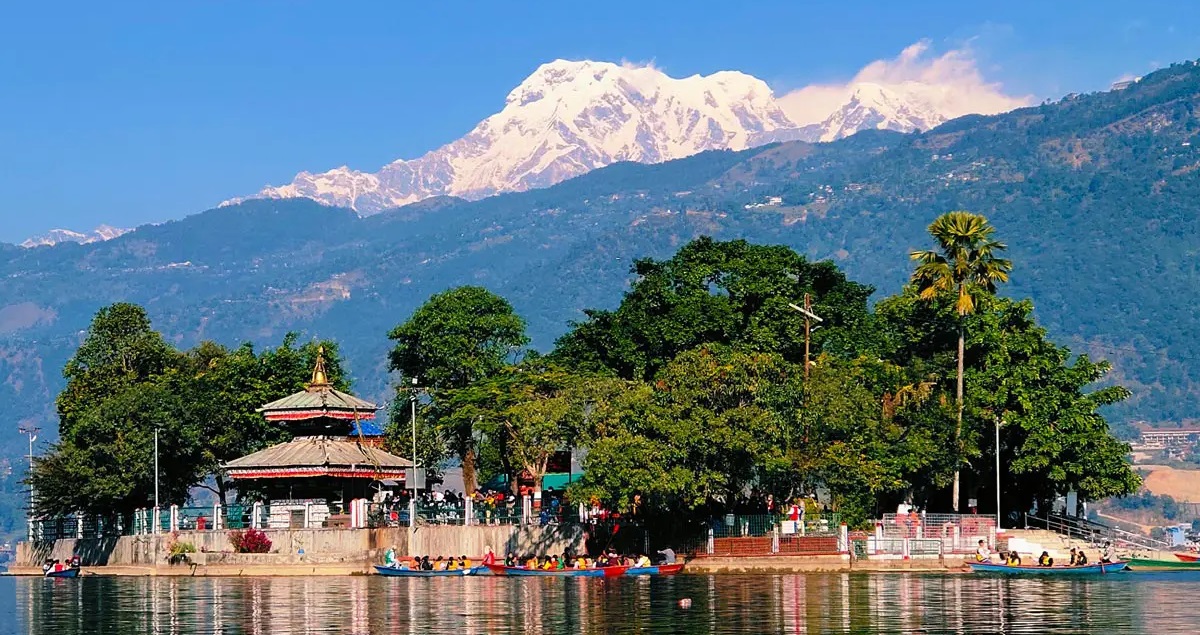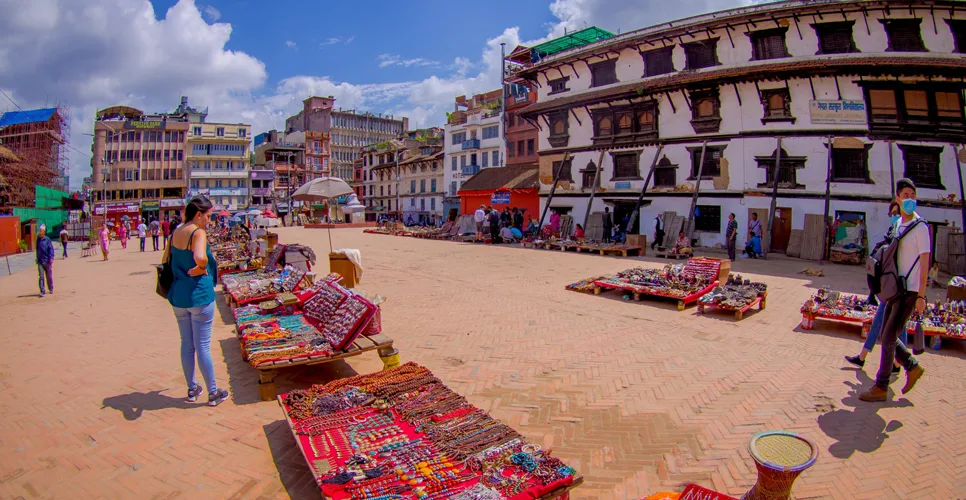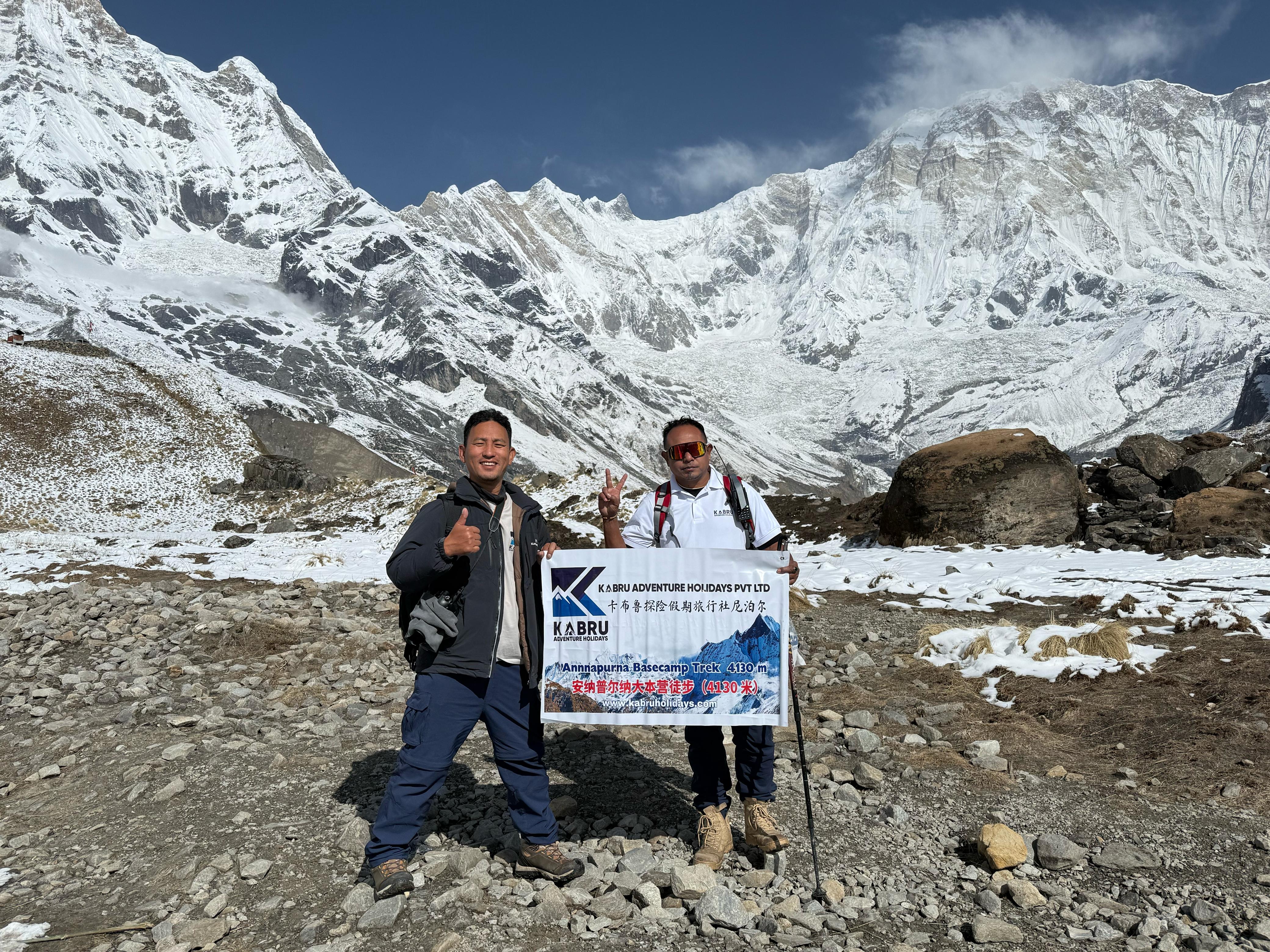Annapurna Base Camp (ABC) Trek
Group Discounts |
|
| 1 Pax. | US$ 1150 PP |
|---|---|
| 2-4 Pax. | US$ 1100 PP |
| 5-7 Pax. | US$ 1050 PP |
| 8-10 Pax. | US$ 1000 PP |
| 11-14 Pax. | US$ 950 PP |
| Over 15 Pax. | US$ 899 PP |
Trip Highlights of Annapurna Base Camp (ABC) Trek
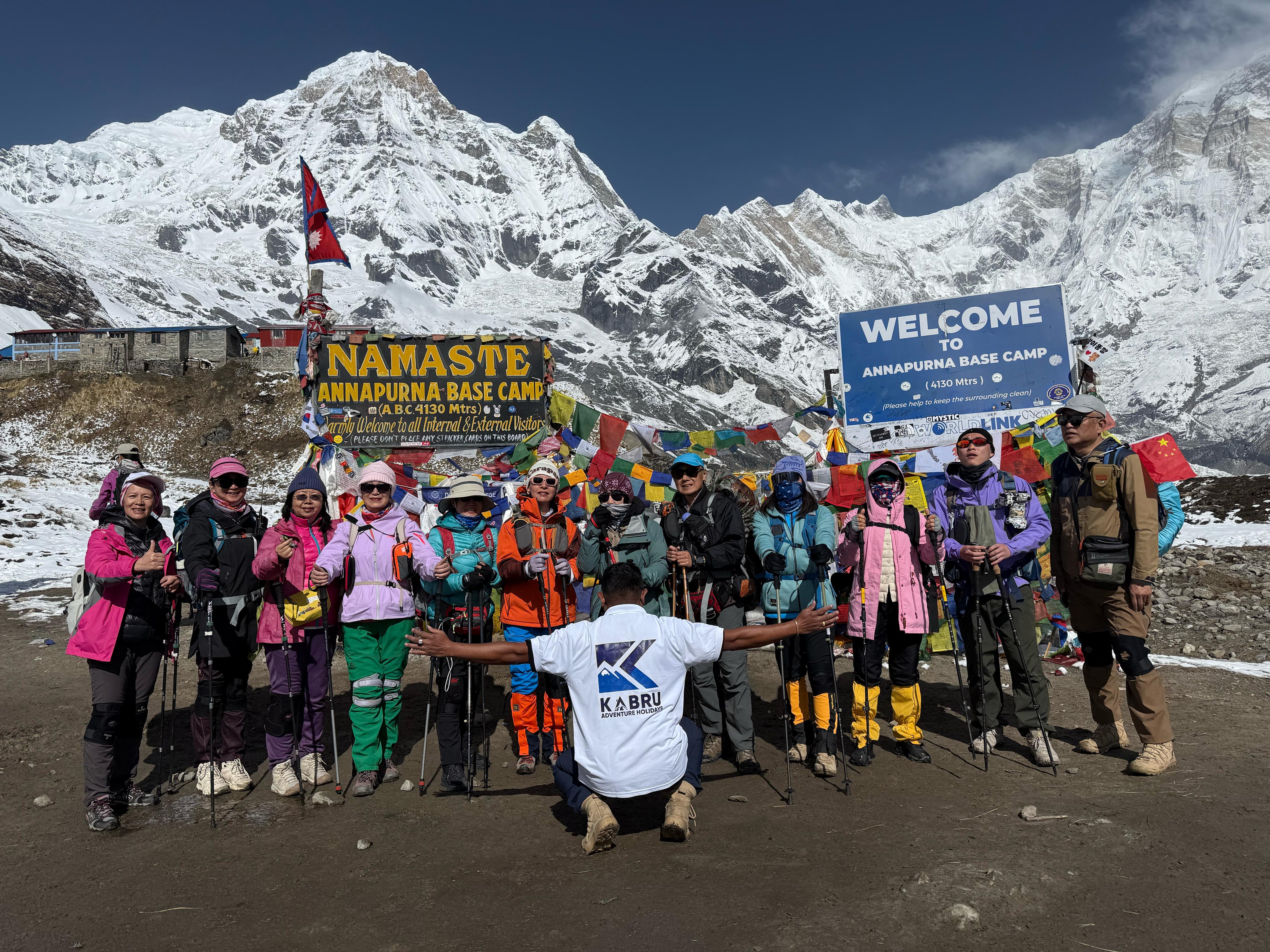
- Scenic Drive to Nayapul: Begin your adventure with a picturesque drive from Pokhara to Nayapul, passing terraced fields, charming villages, and lush green hills.
- Trek Through Traditional Villages: Walk through Tikhedhunga, Ghorepani, Chhomrong, and more, experiencing the warm hospitality of Gurung and Magar communities.
- Poon Hill Sunrise (3,210m): Witness a breathtaking sunrise over the snow-capped Annapurna and Dhaulagiri ranges, a sight that will stay with you forever.
- Diverse Landscapes & Lush Forests: Trek through rhododendron forests, bamboo groves, alpine meadows, and glacial moraines, with stunning views at every turn.
- Spectacular Annapurna Base Camp (4,130m): Stand in the heart of the Annapurna Sanctuary, surrounded by towering Himalayan giants like Annapurna I, Machhapuchhre (Fishtail), and Hiunchuli.
- Serene Himalayan Sunrises & Sunsets: Experience golden-hour magic with breathtaking sunrise and sunset views from various points along the trek.
- Wildlife & Biodiversity: Spot Himalayan Thars, langurs, colorful pheasants, and unique alpine flora along the way.
- Relaxing Hot Springs at Jhinu Danda: Soothe your tired muscles in the natural hot springs of Jhinu Danda, a perfect way to unwind before the trek’s end.
- Cultural Immersion: Discover ancient monasteries, prayer flags, and rich Himalayan traditions, making this trek more than just a physical journey.
- Expert Guidance & Seamless Arrangements: Enjoy a hassle-free trek with the experienced and professional team of Kabru Adventure Holidays, ensuring safety, comfort, and an unforgettable experience.
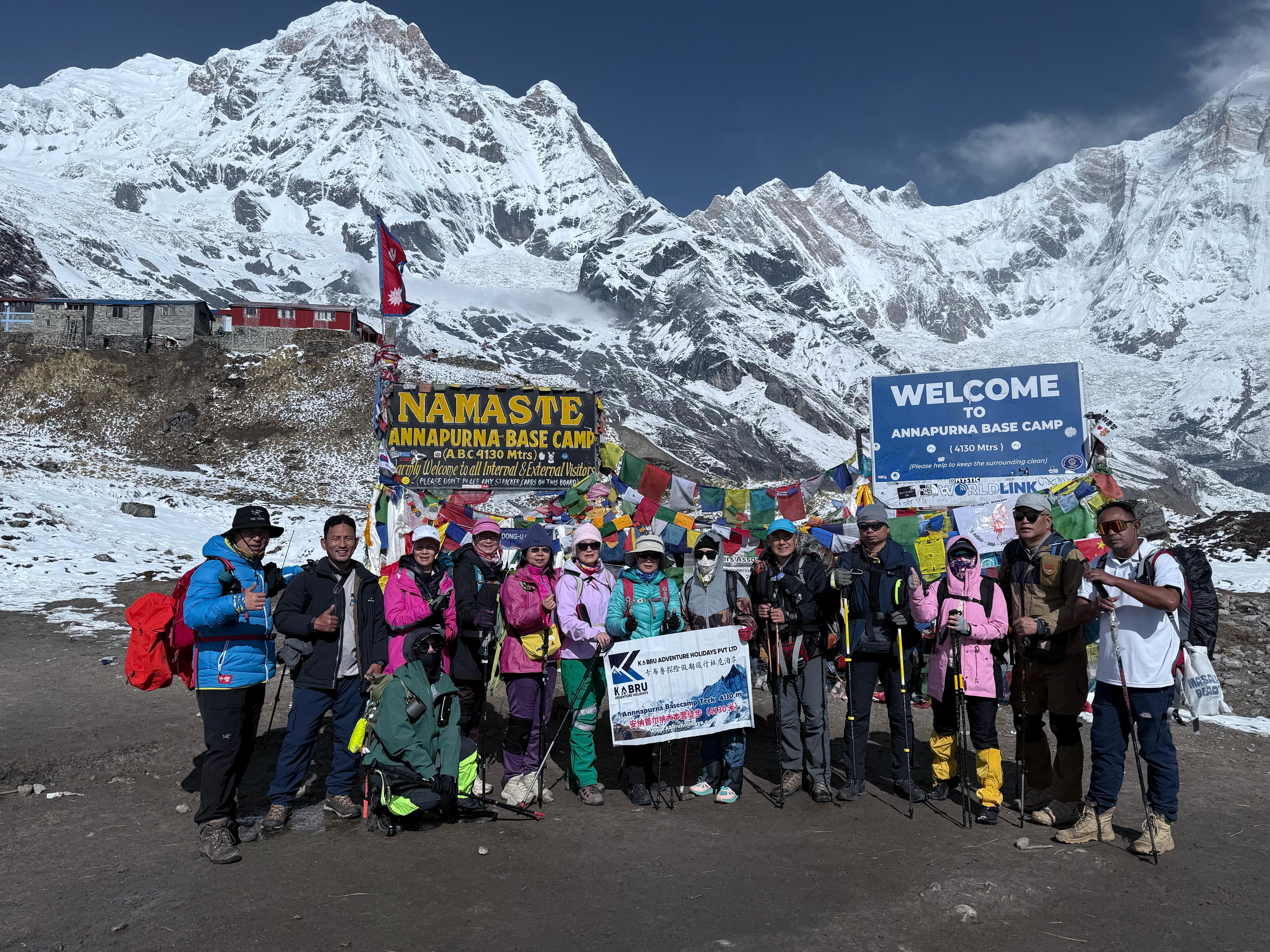
Most Asked Questions by Travellers
The trek is moderate in difficulty, suitable for both beginners and experienced trekkers. While no technical climbing is required, it involves 5-7 hours of trekking per day with some steep ascents and descents.
The standard Annapurna Base Camp trek takes 7-10 days, depending on the route and walking pace. Some trekkers combine it with Poon Hill, making it a longer trek.
The best time is spring (March-May) and autumn (September-November) when the weather is clear, and the views of the Himalayas are spectacular. Winter (December-February) is also possible but can be very cold, while monsoon (June-August) has heavy rainfall.
Yes, you need two permits:
- Annapurna Conservation Area Permit (ACAP)
- Trekkers’ Information Management System (TIMS) card
Kabru Adventure Holidays arranges all required permits for trekkers.
Since the highest point is 4,130m at Annapurna Base Camp, the risk of altitude sickness is lower than in higher treks like Everest Base Camp. However, proper acclimatization, hydration, and a steady trekking pace are recommended.
The trek has teahouses and lodges with basic yet comfortable rooms, shared bathrooms, and warm dining areas. Higher up, facilities become more basic, but warm meals and hot drinks are available.
Essential gear includes:
- Trekking boots
- Warm layers (down jacket, fleece, thermals)
- Sleeping bag (rated for -10°C or lower in colder months)
- Rain gear (for monsoon and unpredictable weather)
- Trekking poles, sunscreen, sunglasses, and a water bottle
Yes, it is possible to trek independently, but hiring a guide from Kabru Adventure Holidays ensures safety, local insights, and a hassle-free experience. A porter can also help carry your bags, making the trek more enjoyable.
Teahouses serve a variety of Nepali, Tibetan, and international dishes. The most popular meal is Dal Bhat (rice, lentil soup, and vegetables), which provides plenty of energy. You’ll also find noodles, pasta, soups, momos, eggs, pancakes, and tea/coffee.
Wi-Fi is available in some teahouses but can be slow and unreliable. Electricity is available for charging devices, but some lodges charge extra for it. Carrying a power bank is recommended.



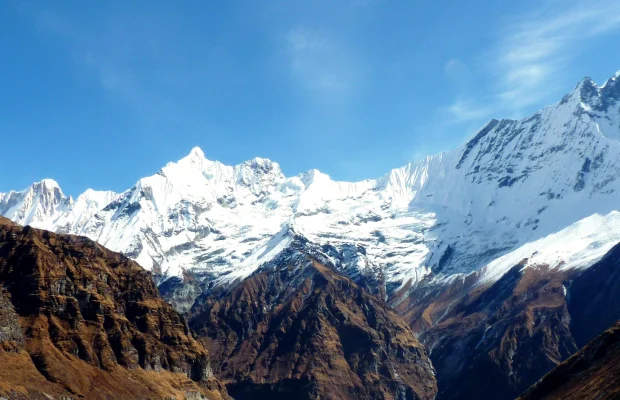
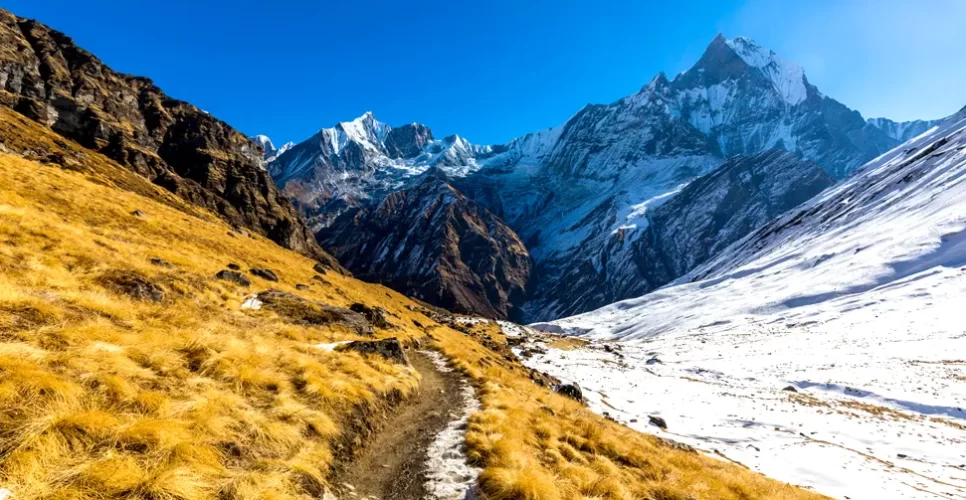
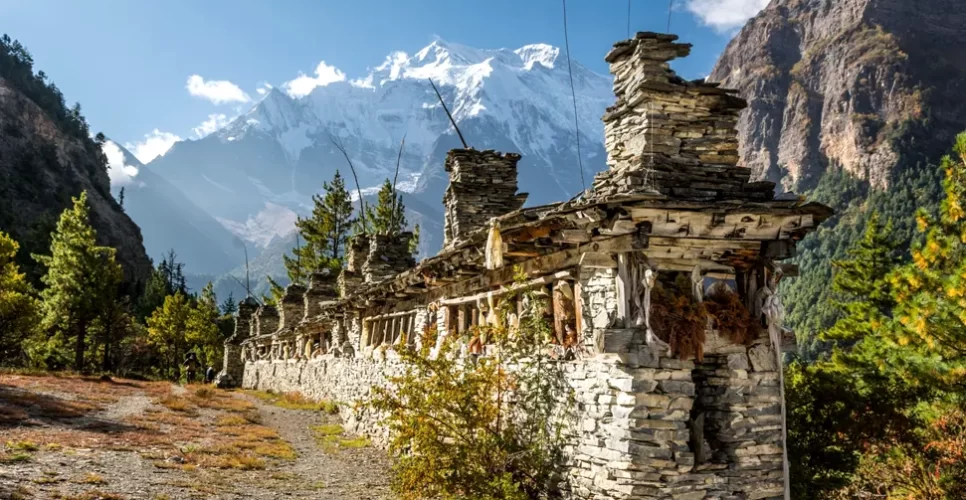
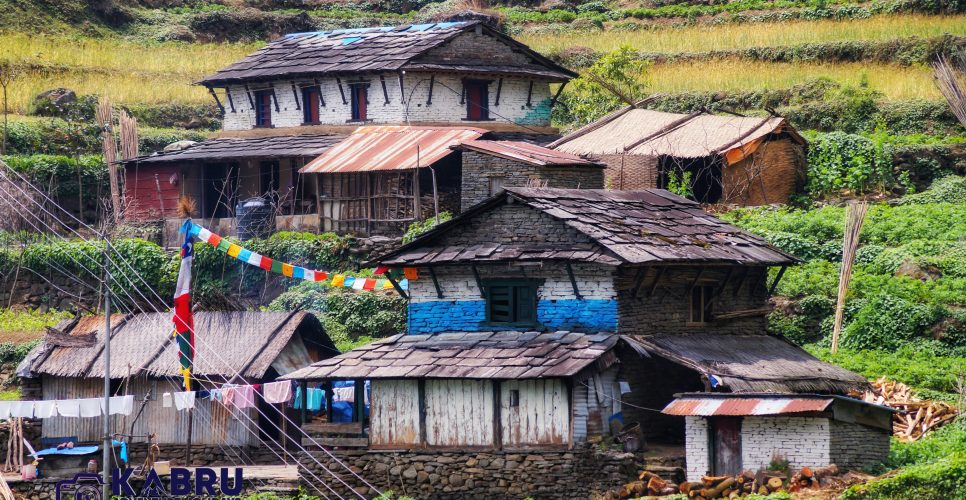
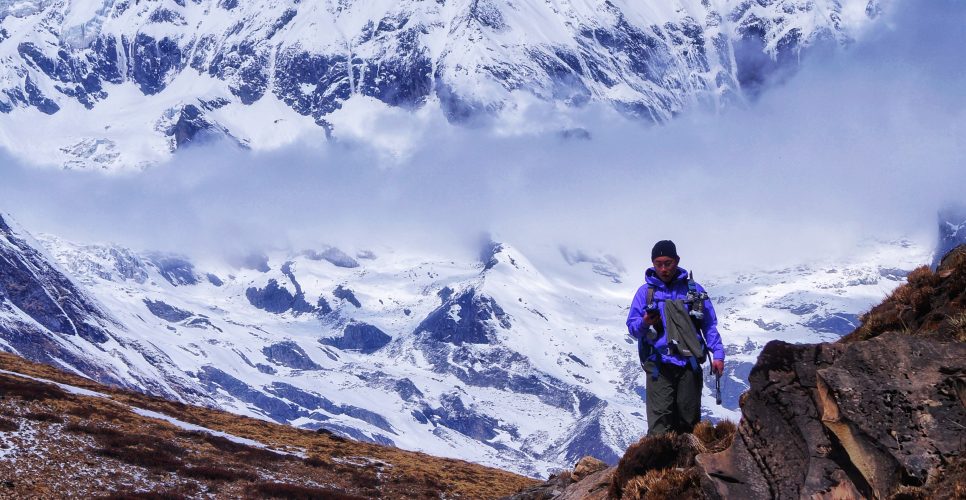
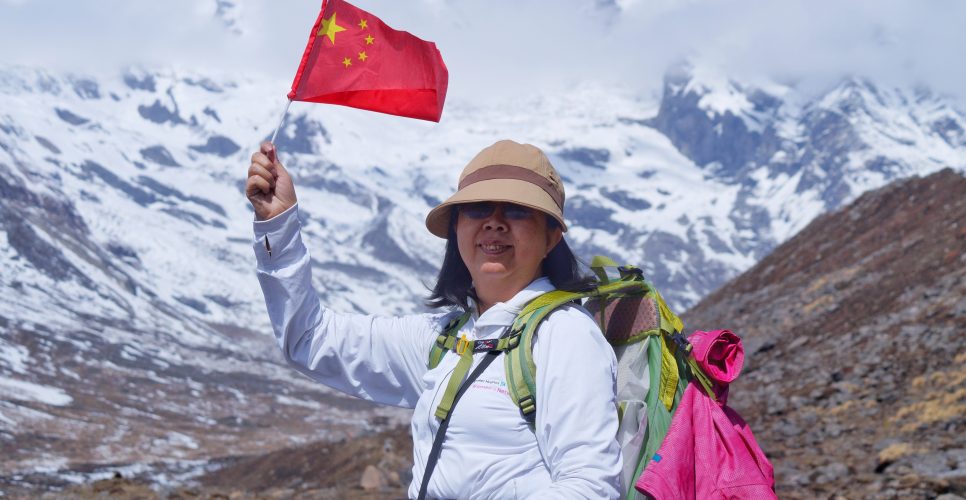
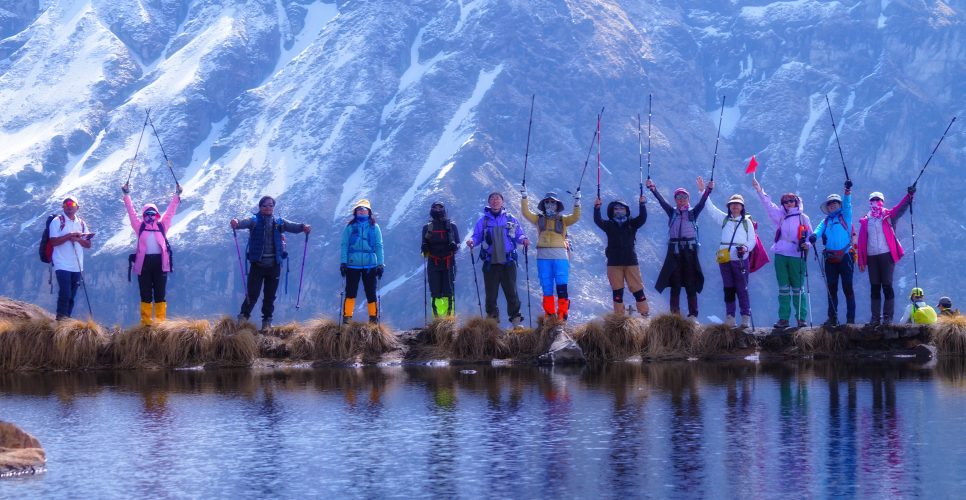
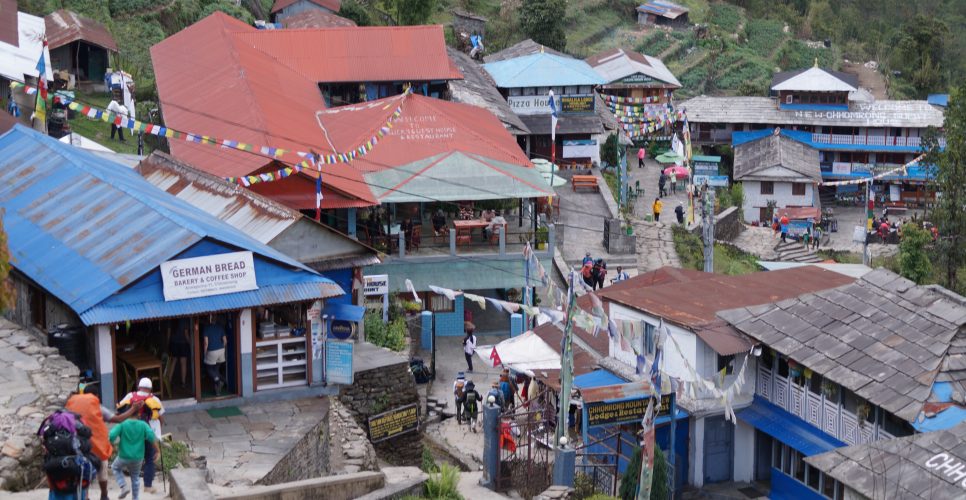
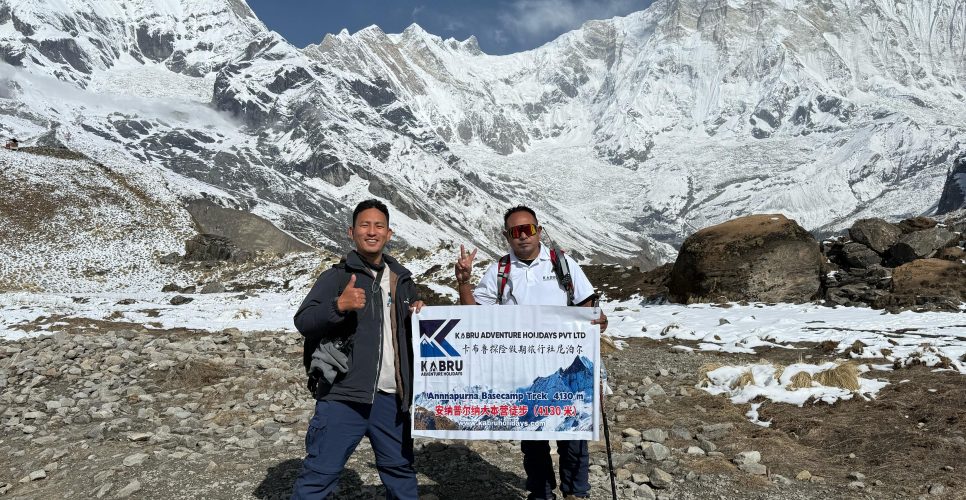
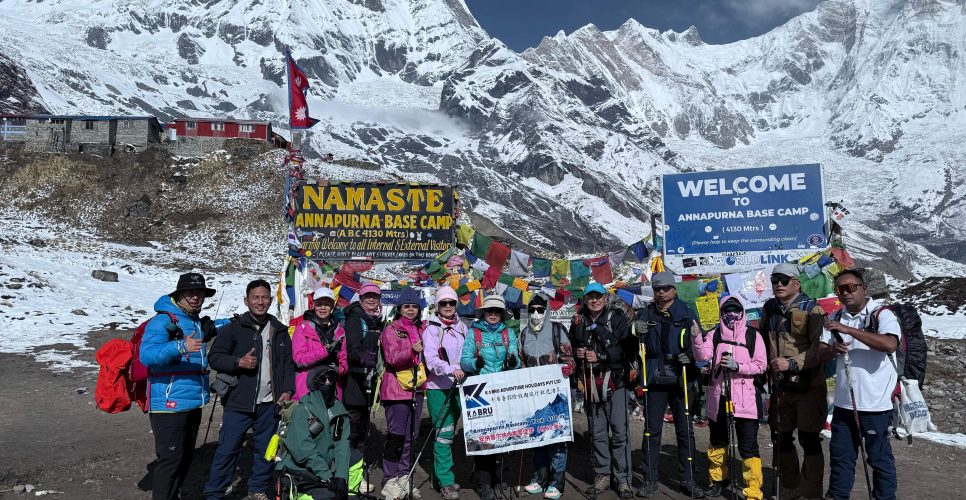
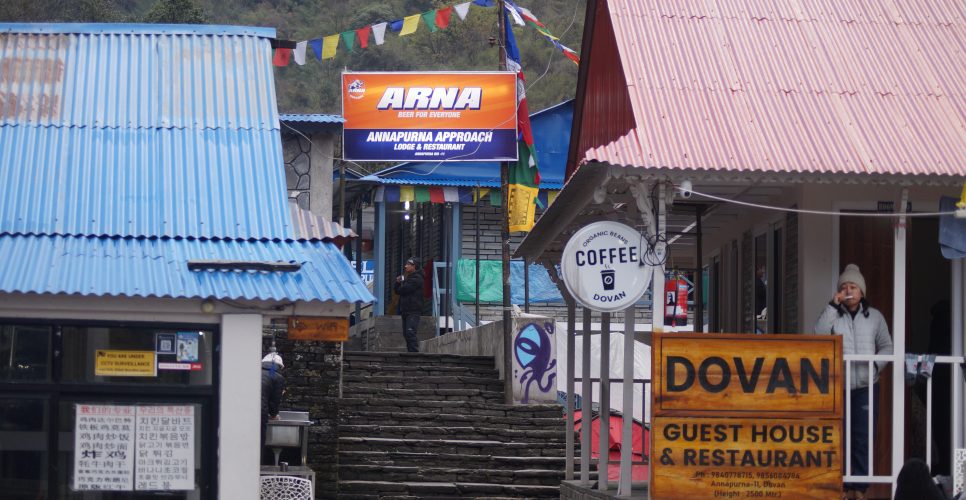
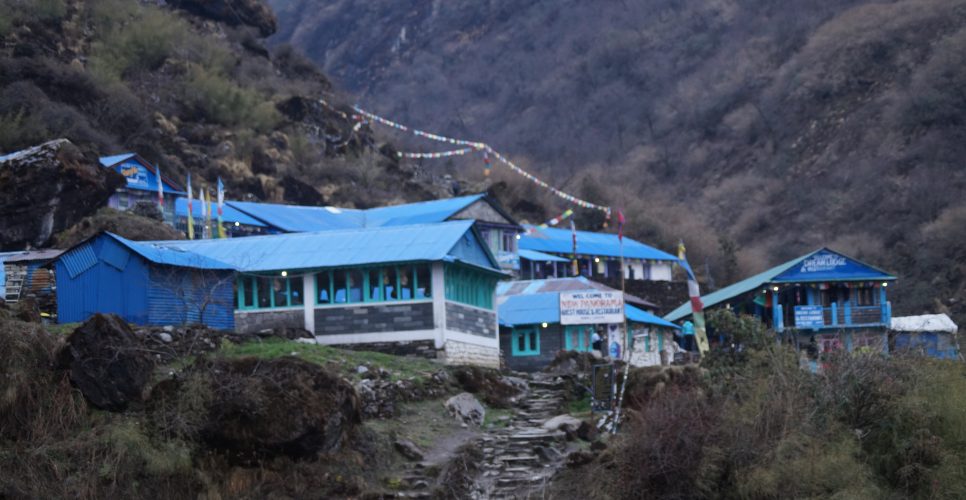
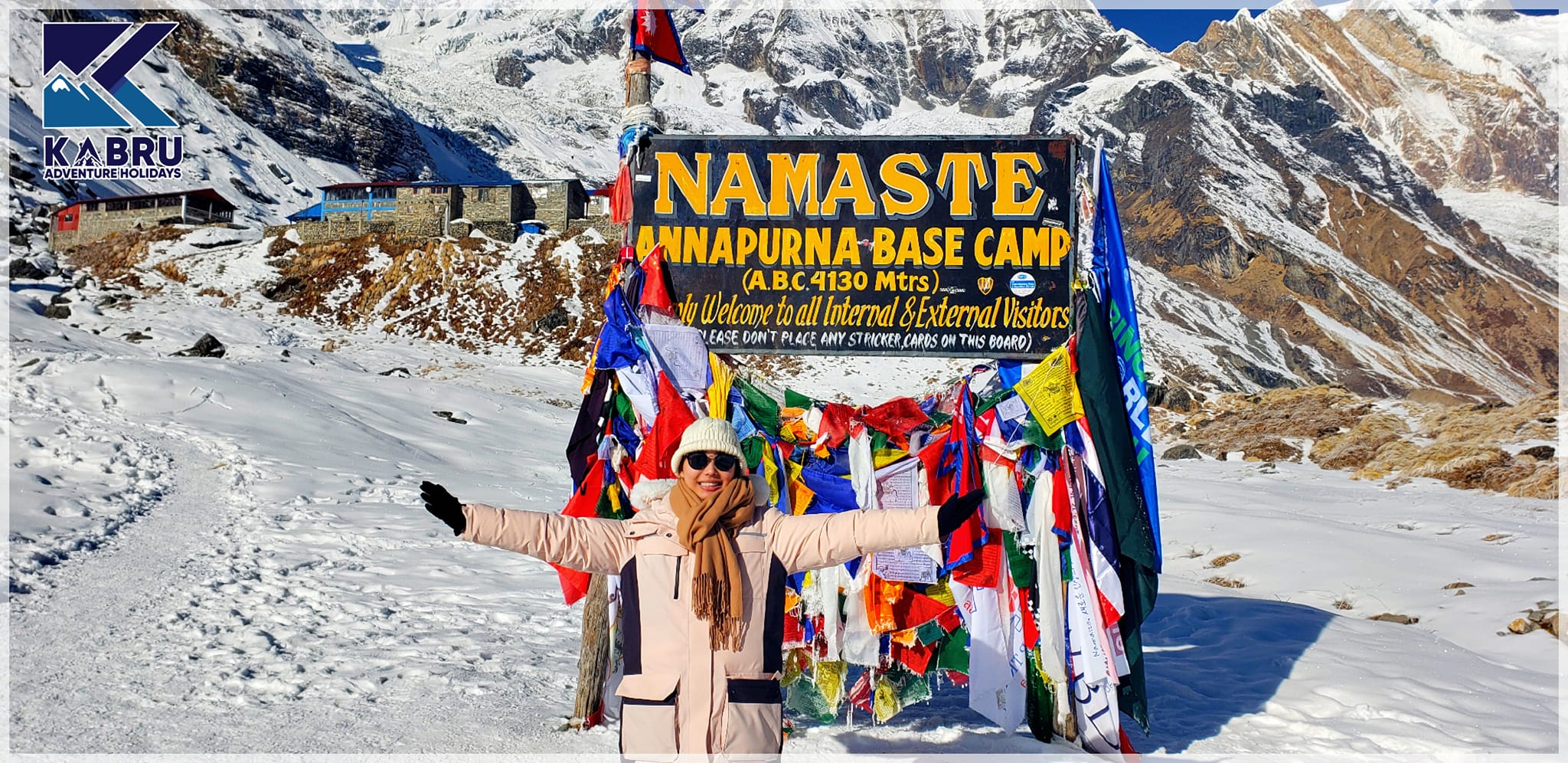 The Annapurna Base Camp Trek with Peregrine Treks will provide an adventure you will remember for ages. ABC Trek is the premier terminus in Nepal, and we invite you to experience all its surprise elements on our 14-day trek, which makes for an unforgettable trip.
The Annapurna Base Camp Trek with Peregrine Treks will provide an adventure you will remember for ages. ABC Trek is the premier terminus in Nepal, and we invite you to experience all its surprise elements on our 14-day trek, which makes for an unforgettable trip.

